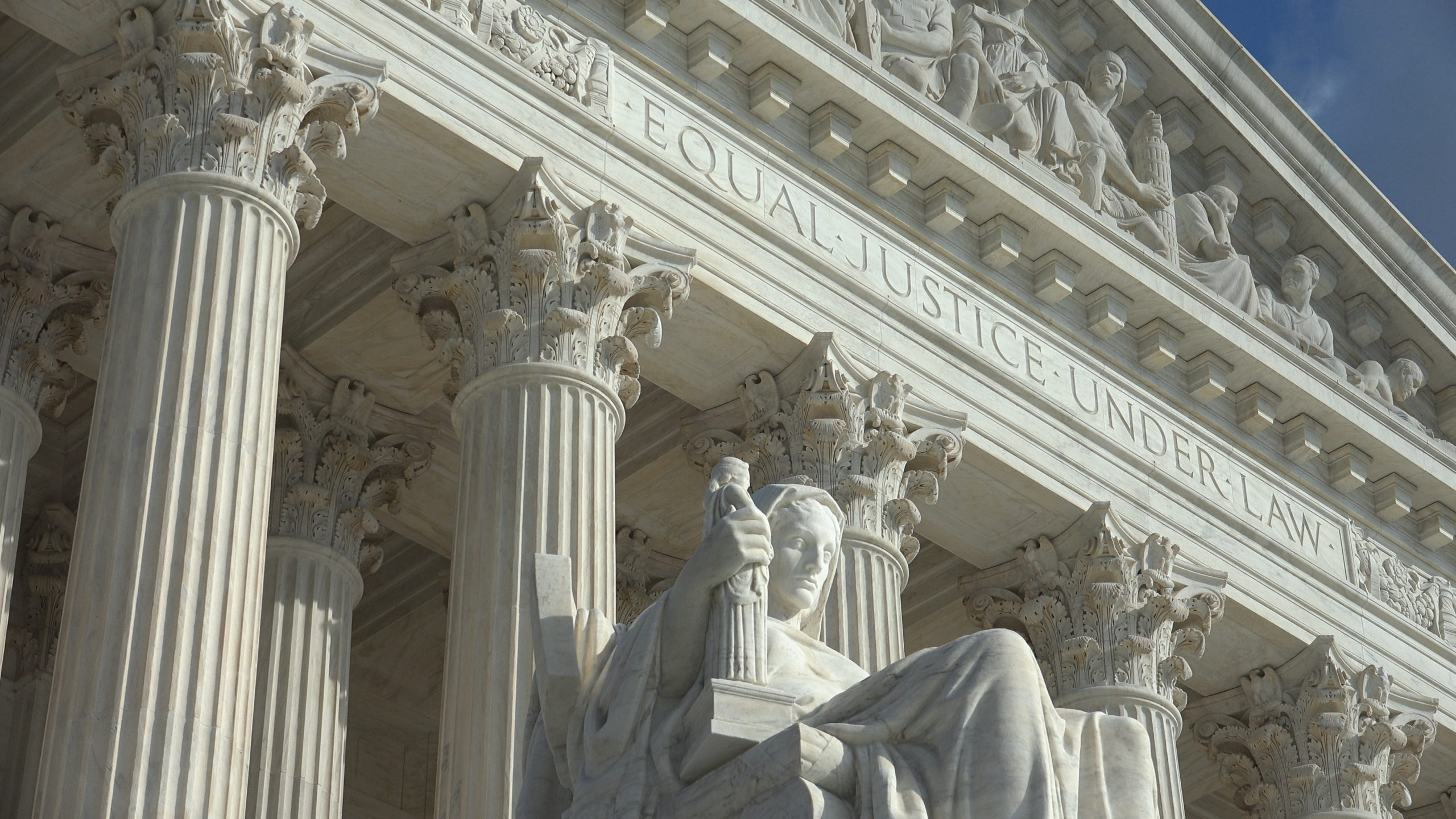TransUnion LLC v. Ramirez: A Pyrrhic Victory for Class Action Defendants?

Ellis & Winters
On June 25, 2021, a divided Supreme Court issued an important decision regarding Article III standing in TransUnion LLC v. Ramirez, 141 S.Ct. 2190 (2021). In TransUnion, a 5-4 Court found that 6,332 members of an 8,185-member plaintiff class did not suffer a “concrete injury” from TransUnion’s violation of the Fair Credit Reporting Act (FCRA) by including erroneous information on the plaintiffs’ credit reports.
The Court reasoned that, although TransUnion technically violated the FCRA through its inaccurate reporting, thus giving rise to a statutory cause of action, it did not actually harm over 75% of the class because it did not send their credit reports to any third parties. Thus, the Court held that those class members whose credit reports remained within TransUnion lacked standing under Article III of the Constitution to sue TransUnion in federal court. As the dissent warned, however, the Court’s holding applies to federal courts only, meaning that class action defendants may find themselves defending more class actions attempting to vindicate federal statutory rights in state court.
A look at TransUnion, including its underpinnings, and a recent North Carolina analogue, helps tell this story.
Precursor to TransUnion
Writing for the majority (Chief Justice Roberts and Justices Alito, Gorsuch, Kavanaugh, and Barrett), Justice Kavanaugh leaned heavily on the Court’s most recent Article III standing case, Spokeo, Inc. v. Robins, 136 S. Ct. 1540 (2016). In Spokeo, the Court (Chief Justice Roberts and Justices Kennedy, Thomas, Breyer, Alito, and Kagan in the majority) recounted the three-part test for Article III standing: (1) an injury-in-fact, (2) fairly traceable to the challenged conduct, and (3) likely to be redressed by a favorable judgment.
To establish an injury-in-fact, a plaintiff had to demonstrate “an invasion of a legally protected interest” that is “concrete and particularized” and “actual or imminent, not conjectural or hypothetical.” Spokeo, 136 S. Ct. at 1548. The Court explained that a plaintiff does not automatically satisfy the injury-in-fact requirement whenever Congress codifies a cause of action. In other words, a plaintiff cannot “allege a bare procedural violation, divorced from any concrete harm, and satisfy the injury-in-fact requirement of Article III.” Id. at 1549. By way of example, the Court reasoned that “[i]t is difficult to imagine how the dissemination of an incorrect zip code [on a consumer’s credit report], without more, could work any concrete harm.” Id. at 1550.
On remand, the Ninth Circuit held that Robins had established a concrete injury for purposes of Article III standing because the inaccurate credit reporting had caused him “real harm” to his employment prospects at a time when he was unemployed. See Robins v. Spokeo, Inc., 867 F.3d 1108 (9th Cir. 2017). Spokeo appealed again, and the Supreme Court denied the petition for writ of certiorari. This led to circuit splits about how to interpret and apply Spokeo, thus paving the way for TransUnion a few years later.
The TransUnion Case
Sergio Ramirez was the named plaintiff on behalf of a plaintiff class that sued TransUnion in the U.S. District Court for the Northern District of California alleging various FCRA violations. Principally, Ramirez alleged that TransUnion incorrectly reported that he and others were on a federal government watchlist of “specially designated nationals” who are national security threats to the United States, with whom it is generally unlawful to conduct business.
Ramirez learned that he was on the government watchlist when a car salesman told Ramirez that he could not sell him a car because his TransUnion credit report contained a government alert that his name was on a “terrorist list.” Ramirez then asked TransUnion for a copy of his credit report, and it mailed him a copy that did not include the government watchlist alert, and then it subsequently mailed him a letter that included the alert but did not include a copy of TransUnion’s summary of rights, which the FCRA required. Ramirez sued TransUnion and was able to certify a class of 8,185 U.S. citizens who received a TransUnion mailing during a certain timeframe that was similar to the second mailing TransUnion sent Ramirez.
In the district court, Ramirez and TransUnion stipulated that TransUnion incorrectly included the government watchlist alert on all 8,185 class members but distributed reports to third parties for only 1,853 class members. TransUnion then moved to decertify the class because, under Spokeo, a plaintiff cannot establish injury-in-fact by alleging “a bare procedural violation, divorced from any concrete harm….” TransUnion, 141 S.Ct. at 2213 (quoting Spokeo, 578 U.S. at 341).
TransUnion argued that 6,332 individuals—over 75% of the class—had alleged no concrete harm and thus had no standing to assert their claims. The district court denied TransUnion’s motion, and the jury awarded the class over $60 million, including punitive damages. The Ninth Circuit affirmed but reduced the jury’s verdict to about $40 million. See Ramirez v. TransUnion LLC, 951 F.3d 1008 (9th Cir. 2020).
The Supreme Court reversed, reasoning that the 6,332 class members whose credit reports were not sent to any third parties did not suffer a concrete injury and thus lacked standing under Article III to bring their claims in federal court. The Court applied its reasoning in Spokeo—specifically that a plaintiff’s injury be “concrete” (i.e., “real and not abstract”) and that “Article III standing requires a concrete injury even in the context of a statutory violation.” Spokeo, 578 U.S. at 341 (emphasis added).
In further deference to Spokeo, the Court quoted a recent Sixth Circuit case citing Spokeo for the fundamental point that even though “Congress may ‘elevate’ harms that ‘exist’ in the real world before Congress recognized them to actionable legal status, it may not simply enact an injury into existence, using its lawmaking power to transform something that is not remotely harmful into something that is.” Ramirez, 141 S.Ct. at 2205 (quoting Hagy v. Demers & Adams, 882 F.3d 616, 622 (6th Cir. 2018)).
And Justice Kavanaugh, with a nod to his newest colleague, Justice Barrett, put a finer point on it and quoted a recent Seventh Circuit opinion for the proposition that “Article III grants federal courts the power to redress harms that defendants cause plaintiffs, not a freewheeling power to hold defendants accountable for legal infractions.” Id. (quoting Casillas v. Madison Avenue Assocs., Inc., 926 F.3d 329, 333 (7th Cir. 2019)).
The Court concluded that “[e]very class member must have Article III standing in order to recover individual damages” and that “‘Article III does not give federal courts the power to order relief to any uninjured plaintiff, class action or not.’” Id. at 2208 (quoting Tyson Foods, Inc. v. Bouaphakeo, 577 U.S. 442, 466 (2016)).
Interestingly, the Court did not address the question of “whether every class member must demonstrate standing before a court certifies a class.” Id., n.4 (emphasis added). This means that absence of concrete injury alone will not preclude class certification. As a policy matter, why courts would allow certification of a class of plaintiffs not wholly made up of members who have standing to sue in federal court is unclear. As a practical matter, however, plaintiffs’ lawyers still may attempt to certify a class in federal court in attempt to increase settlement pressure on defendants who would prefer to end the litigation. Nevertheless, after TransUnion, defendants likely will be emboldened to proceed at least through a complete standing analysis to get the size of the class—and thus any total potential damages award—significantly pared back.
The TransUnion Dissent
Justices Thomas, Breyer, Sotomayor, and Kagan dissented, finding it “remarkable in both its novelty and effects” that the majority, in requiring a concrete injury in addition to a statutory right, had “relieved the legislature of its power to create and define rights.” Id. at 2221. Perhaps most importantly for future class action trends, the dissent warned that the Court’s opinion would result in more class actions being filed in state courts rather than federal courts. Id. at 2224, n.9. Writing for the dissent, Justice Thomas wrote: “Today’s decision might actually by a pyrrhic victory for TransUnion. The Court does not prohibit Congress from creating statutory rights for consumer; it simply holds that federal courts lack jurisdiction to hear some of these cases.” Id. In referring to class actions involving plaintiffs that have not demonstrated concrete injury, Justice Thomas concluded: “By declaring that federal courts lack jurisdiction, the Court has thus ensured that state courts will exercise exclusive jurisdiction over these sorts of class actions.” Id.
The Implications on State Class Action Practice
Historically, many class action plaintiffs have brought their claims in federal court, or defendants have removed to federal court in attempt to litigate in front of a judiciary they perceived to be generally more sympathetic to corporate interests than a state court judge or jury might be. But in Spokeo, the Supreme Court started to pull the rug out from under plaintiffs attempting to stand in federal court based on a defendant’s mere procedural violations. In absence of concrete injury, plaintiffs were now precluded from suing in federal court.
Five years later, the Supreme Court in TransUnion pulled the Article III standing rug completely out from under plaintiffs who have alleged a statutory violation only. Going forward, class action defendants in federal court should emphasize that every member of a certified class must establish Article III standing, as described above, to be able to recover individual damages. The most logical result of this—as Justice Thomas pointed out in his dissent—is that class action plaintiffs alleging a federal statutory violation likely will at least attempt to turn to state courts to pursue their claims.
Many states allow standing in cases where federal courts would preclude it. North Carolina is one such state, as evidenced by a recent case decided by the Supreme Court of North Carolina.
In Committee to Elect Dan Forest v. Employees Political Action Committee, 376 N.C. 558 (N.C. 2021), the Supreme Court of North Carolina held that plaintiffs need not show an injury in fact when a statute affords a right to sue. The Court found that the North Carolina Constitution does not limit the state courts’ jurisdiction the same way Article III of the U.S. Constitution limits federal courts, including the requirement that a plaintiff show an “injury in fact.”
The Court ultimately upheld standing to sue based on the technical statutory violation at issue there, irrespective of actual injury or damages. The case appears to be at odds with TransUnion, though how broadly North Carolina courts will apply Dan Forest’s holding remains to be seen.
What’s Next for Class Action Defense in North Carolina?
Going forward, we expect that courts in states like North Carolina that have more lenient standing principles likely will find themselves adjudicating more class actions filed under federal statutes.
Defendants may be tempted to remove these class actions to federal court. But they should think carefully before doing so, as a handful of recent federal court decisions have remanded such class actions to state court, with at least one court awarding attorney fees for such maneuver. See, e.g., Mocek v. Allsaints USA Ltd., 2016 WL 7116590, at *3 (Dec. 7, 2016) (remanding to state court due to lack of subject matter jurisdiction but awarding more than $58,000 in attorney fees because defendant “tried to have it both ways by asserting, then immediately disavowing, federal jurisdiction”).
Defendants might, instead, consider seeking dismissal based on state law standing principles, including statutory standing, which focuses on the merits of the claim, including whether proof of actual injury is required, and results in dismissal with prejudice, rather than remand or dismissal without prejudice in the case of removal based on Article III standing.
**Ellis & Winters’s Best in Class Blog covers developments in class actions in courts across the United States, focusing on insights for class-action defense.**


